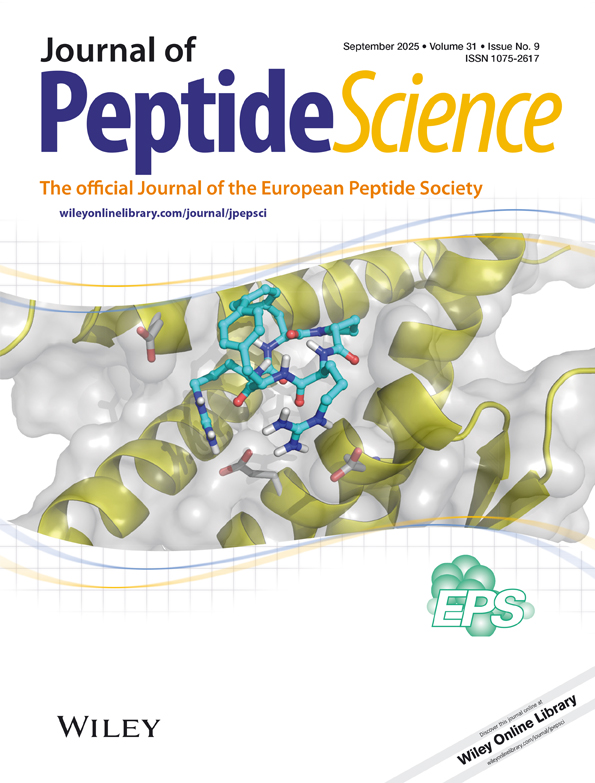Synthesis and characterization of a new biotinylated gramicidin
Abstract
A new linear gramicidin analog bearing a biotinyl group grafted on C-terminal part was designed to study ligand–receptor interactions. The C-terminal alcohol in the native peptide was first replaced by an amino group. Then the peptide was synthesized on a polystyrene resin functionalized by the 2-chlorotrityl chloride following a biotinylation performed in solution. This new N′-biotinyl-(EDA)15-Gramicidin A was reconstituted in planar lipid bilayers and exhibited channel activities similar to those of natural gramicidin, with unitary conductance value about 30 ps in 1 m KCl. Furthermore this ionophore activity was quenched by addition of streptavidin in the surrounding medium. Our system is an outstanding tool for monitoring ligand–receptor interactions and could be used for designing a new biosensor. © 1998 European Peptide Society and John Wiley & Sons, Ltd.




